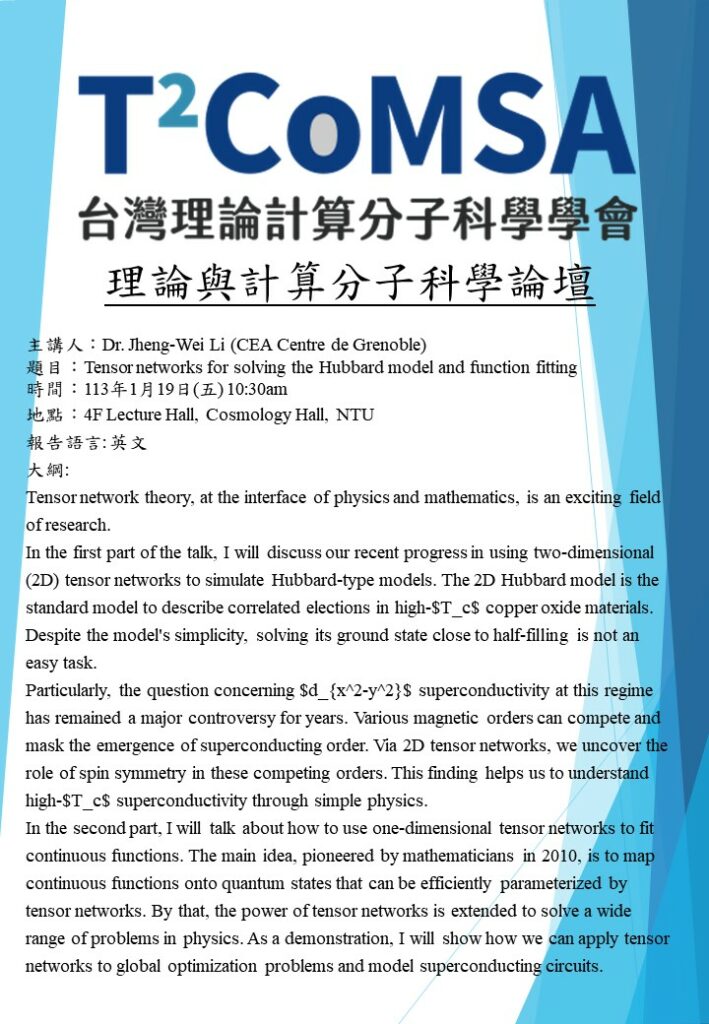主講人:Dr. Jheng-Wei Li (CEA Centre de Grenoble)
題目: Tensor networks for solving the Hubbard model and function fitting
時間:113年1月19日(五) 10:30
地點: 4F Lecture Hall, Cosmology Hall, NTU (台灣大學次震宇宙館4樓演講廳)
報告語言: 英文
Online Link (Webex):https://nationaltaiwanuniversity-zbh.my.webex.com/nationaltaiwanuniversity-zbh.my-tc/j.php?MTID=mabcf9d00b3c3ec8799cb6163b3386419
Meeting number:2552 536 8285
Password:cbXHqvxF662(22947893 from phones and video systems)
大綱:
Tensor network theory, at the interface of physics and mathematics, is an exciting field of research.
In the first part of the talk, I will discuss our recent progress in using two-dimensional (2D) tensor networks to simulate Hubbard-type models. The 2D Hubbard model is the standard model to describe correlated elections in high-$T_c$ copper oxide materials. Despite the model’s simplicity, solving its ground state close to half-filling is not an easy task.
Particularly, the question concerning $d_{x^2-y^2}$ superconductivity at this regime has remained a major controversy for years. Various magnetic orders can compete and mask the emergence of superconducting order. Via 2D tensor networks, we uncover the role of spin symmetry in these competing orders. This finding helps us to understand high-$T_c$ superconductivity through simple physics.
In the second part, I will talk about how to use one-dimensional tensor networks to fit continuous functions. The main idea, pioneered by mathematicians in 2010, is to map continuous functions onto quantum states that can be efficiently parameterized by tensor networks. By that, the power of tensor networks is extended to solve a wide range of problems in physics. As a demonstration, I will show how we can apply tensor networks to global optimization problems and model superconducting circuits.

